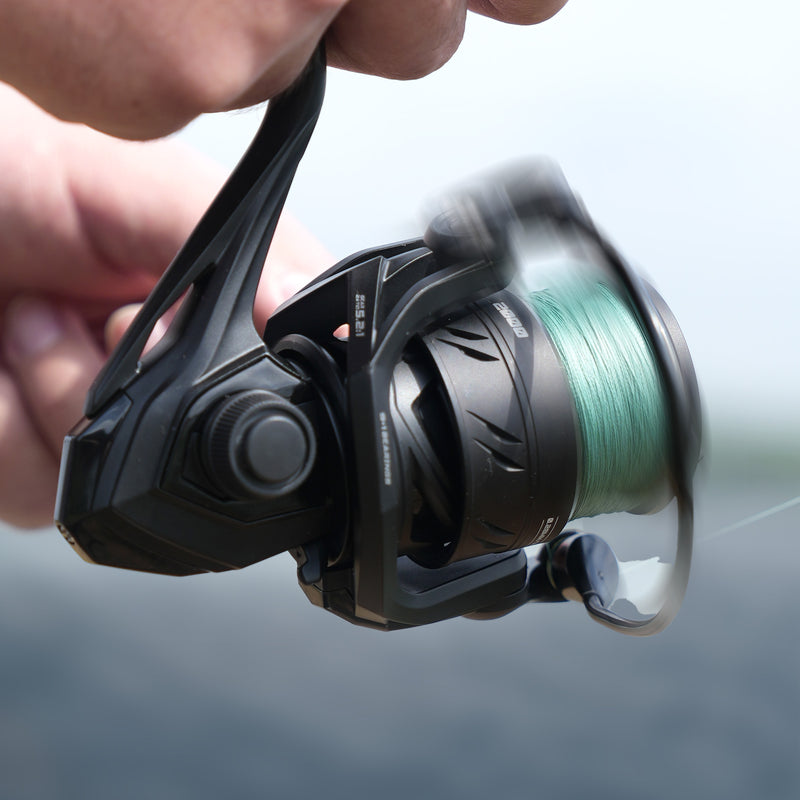Unlock the Secrets to Choosing the Perfect Saltwater Fishing Reel!
Choosing the right saltwater fishing reel is crucial for any angler who wants to make the most of their time on the water. Unlike freshwater fishing, which often allows for a wider variety of reels due to the less corrosive environment, saltwater fishing presents unique challenges. The harsh conditions, such as saltwater's corrosive properties and the need for strength to handle larger fish, require a thoughtful approach to selection. As someone who has spent countless weekends fishing with friends along the coast, I can attest that the right reel can make all the difference. This article will guide you through the process of evaluating and comparing different saltwater fishing reels, ensuring you find the perfect one for your needs.

Understanding Saltwater Fishing Reels
Saltwater fishing reels are specifically designed to withstand the rigors of saltwater environments. Unlike their freshwater counterparts, these reels are built with materials that resist corrosion, such as anodized aluminum and stainless steel. Additionally, saltwater reels often feature sealed components to prevent salt and sand ingress, which can severely impact performance. The size and strength of these reels are also tailored to handle larger species found in saltwater, often requiring heavier line capacities and robust drag systems. A friend of mine learned this the hard way when his freshwater reel snapped under the strain of a large striped bass. He quickly upgraded to a dedicated saltwater reel and never looked back, enjoying the enhanced durability and performance it offered.
Key Features to Consider
When selecting a saltwater fishing reel, there are several essential features to consider that can significantly affect your fishing experience. One of the most important factors is the drag system, which controls the amount of resistance a fish feels when it pulls on the line. Look for reels with smooth, reliable drag systems that can handle sudden runs. Gear ratios are another critical aspect; they determine how quickly you can retrieve your line. A higher gear ratio allows for faster retrieval, which is particularly useful when targeting species that make quick, aggressive runs. Finally, the materials used in construction are vital. Reels with corrosion-resistant materials and sealed components will last longer and perform better in salty environments.
Drag Systems
There are various types of drag systems, such as star drag and lever drag, each with its advantages. Star drag systems allow for easy adjustments while fighting a fish, making them ideal for lighter tackle. Lever drag systems, on the other hand, provide more precise control, which is beneficial when targeting larger fish. Understanding these systems can greatly enhance your fishing performance, allowing for better management of line tension.
Gear Ratios
Gear ratios play a vital role in retrieval speed and efficiency. A reel with a higher gear ratio retrieves line faster, making it easier to keep up with fast-swimming fish. Conversely, lower gear ratios offer more torque, which can be advantageous when battling larger species. It's essential to match the gear ratio to the type of fishing you plan to do, as this can greatly influence your success.
Material and Construction
Corrosion-resistant materials such as aluminum and graphite are crucial for saltwater fishing reels. These materials not only enhance the reel's longevity but also its overall performance in harsh conditions. A well-constructed reel will have sealed bearings and protective coatings that guard against salt and sand, ensuring that your investment lasts for many fishing seasons.
Types of Saltwater Fishing Reels
There are several types of saltwater fishing reels to choose from, each with its unique advantages. Spinning reels are among the most popular due to their versatility and ease of use, making them great for beginners and experienced anglers alike. Baitcasting reels offer greater accuracy and control, ideal for targeting specific spots and larger fish. Conventional reels, often used for deep-sea fishing, provide the strength needed to haul in big catches from the depths. Understanding the best use for each type can help you make a more informed decision based on your fishing style and target species.
Evaluating Reel Performance
To truly assess a saltwater fishing reel's performance, consider seeking out user reviews and expert opinions. Many fishing forums and websites provide valuable insights from seasoned anglers who share their experiences. Additionally, hands-on testing is invaluable; if possible, try out different reels at your local tackle shop. Feeling the reel's weight, testing the drag system, and checking the gear ratio can all contribute to a better understanding of how it fits your needs. A friend of mine swears by this method, having avoided several poor purchases by simply testing the reels before buying.
Final Thoughts on Choosing Your Reel
In conclusion, selecting the right saltwater fishing reel is essential for enhancing your fishing experience. By understanding the unique features and types of reels available, you can make an informed decision tailored to your fishing style and target species. Remember to evaluate performance through user feedback and hands-on testing, ensuring that your chosen reel meets the demands of the saltwater environment. Armed with the knowledge from this guide, you're now ready to embark on your next fishing adventure with confidence!







